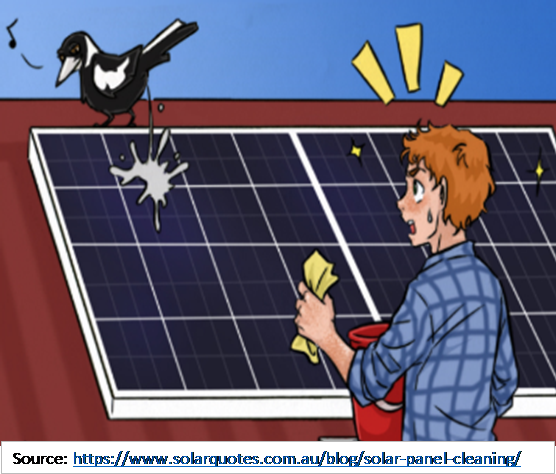Effects of current mismatch due to uneven soiling on the performance of multi-crystalline silicon module strings
DOI:
https://doi.org/10.17159/2413-3051/2020/v31i1a7571Keywords:
shading; cell mismatch; thermal infrared imaging; string performanceAbstract
Photovoltaic (PV) module operation is critical in PV systems for optimum generation of electrical power. Modules installed in the field suffer uneven soiling caused by bird droppings and dust build-up on their front surface. This study investigated the impact of partial shading caused by non-uniform soiling on the electrical characteristics of multi-crystalline silicon (mc-Si) modules and strings, and compared this with simulated I-V parameters. Light and heavy uneven soiling on mc-Si solar cells resulted in current mismatch which can be simulated. The effects of partial soiling on the I-V characteristics of mc-Si module strings were experimentally measured and agreed with the simulated results.
Downloads
References
Breyer, C., Bogdanov, D., Gulagi1, A., Aghahosseini, A., Barbosa, L.S.N.S., Koskinen, O., Barasa, M., Caldera, U., Afanasyeva, S., Child, M., Farfan, J. and Vainikka, P. 2017. On the role of solar photovoltaics in global energy transition scenarios. Progress in Photovoltaics: Research and Applications 25(8): 727–745.
Crozier, J. L., van Dyk, E. E. and Vorster, F. J. 2015. Identification and characterisation of performance limiting defects and cell mismatch in photovoltaic modules. Journal of Energy in Southern Africa 26(3): 19–26.
Ferrara, C. and Philipp, D. 2012. Why do PV modules fail? Energy Procedia 15: 379–387.
FLIR Systems. 2011. Thermal imaging guidebook for building and renewable energy applications. Available at: http://www.flirmedia.com/MMC/THG/Brochures/T820325/T820325_en.pdf. [Accessed: 07 September 2018].
Joint Committee for Guides in Metrology. 2008. Evaluation of measurement data: Guide to the expression of uncertainty in measurement. International Organization for Standardization, Geneva
King, D. L., Dudley, J. K. and Boyson, W. E. 1996. PVSIM©: A simulation program for photovoltaic cells, modules, and arrays. 25th IEEE Photovoltaic Specialists Conference Proceedings. Washington, DC, USA. 1295–1297.
Köntges, M., Kurtz, S., Packard, C.E., Jahn, U., Berger, K., Kato, K., Friesen, T., Liu, H. and Van Iseghem, M. 2014. Review of failures of photovoltaic modules. IEA-Photovoltaic Power Systems Programme. IEA-PVPS.
Mani, F., Pulipaka, S. and Kumar, R. 2016. Characterization of power losses of a soiled PV panel in Shekhawati region of India. Solar Energy 131: 96–106.
Meyer, E. L. and van Dyk, E. E. 2004. Assessing the reliability and degradation of photovoltaic module performance parameters. IEEE 53(1): 83–92.
Smets, A., Jäger, K., Isabella, O., Swaaij van, R., and Zeman, M. 2016. Solar energy: The physics and engineering of photovoltaic conversion technologies and systems, first edition. Cambridge, England: UIT.
Solmetric Corporation. 2018. Solmetric PV Analyzer I-V Curve Tracer with SolSensor TM user’s guide. Available at: http://www.solmetric.net/get/Solmetric PV Analyzer Users Guide_1500_en.pdf [Accessed: 2 February 2019].
Vorster, F. J. and van Dyk, E. E. 2005. Current-voltage characteristics of high-concentration, photovoltaic arrays. Progress in Photovoltaics: Research and Applications 13(1): 55–66.
Wara, M., Cullenward, D. and Teitelbaum, R. 2015. Peak electricity and the clean power plan. Electricity Journal 28(4): 18–27.

Downloads
Published
Issue
Section
License
Copyright (c) 2020 M. Vumbugwa, J.L. Crozier McCleland, E.E. van Dyk, F.J. Vorster, T.J. Serameng

This work is licensed under a Creative Commons Attribution-ShareAlike 4.0 International License.



.png)